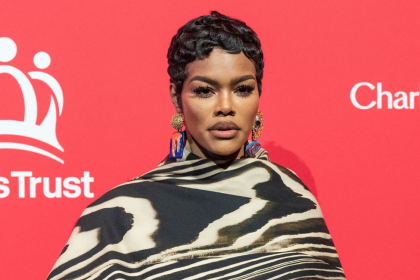Relationships in your 30s exist in a unique space between the exploratory nature of your 20s and the established patterns of later decades. This pivotal period brings profound shifts in how we approach connection, commitment and compatibility as priorities clarify, life experiences accumulate, and self-knowledge deepens. These relationships, whether romantic partnerships, friendships, or family bonds, often undergo significant transformation as individuals navigate career advancement, potential parenthood decisions, and evolving personal identities.
Self-knowledge transforms partner selection
The journey through early adulthood typically delivers invaluable insights about personal needs, values and patterns that fundamentally alter relationship dynamics.
While physical attraction and emotional excitement remain important, adults in their 30s increasingly prioritize alignment in core values, communication styles, and life goals when evaluating potential partners. Research from relationship psychologists indicates that this shift toward substantive compatibility assessment correlates with significantly higher relationship satisfaction and longevity compared to connections formed primarily through initial chemistry.
This evolution reflects both accumulated relationship experience and greater clarity about personal non-negotiables. Having witnessed the dissolution of connections based solely on attraction or circumstantial convenience, many thirty-somethings approach new relationships with more deliberate evaluation frameworks that consider long-term sustainability alongside immediate connection.
Time allocation reflects true priorities
How individuals distribute their limited time and energy provides perhaps the most accurate indicator of relationship values during this demanding decade.
Rather than assuming connections will maintain themselves naturally, successful relationships in this life stage often involve explicit time protection strategies. Scheduled date nights, recurring friend group gatherings, and family connection rituals become essential infrastructure rather than optional additions.
Creating technology-free zones and times specifically dedicated to in-person connection represents a growing trend. Research from the University of California indicates that couples who implement regular device-free periods report 34% higher relationship satisfaction compared to those with unrestricted technology use during shared time.
The challenges of maintaining meaningful connections amid increasing professional and personal demands require these structural approaches. While spontaneity still holds value, the reality constraints of this life phase often necessitate more deliberate relationship maintenance systems than were required in previous decades.
Communication evolves beyond conflict resolution
The nature and purpose of relationship communication typically undergoes significant evolution during the 30s, extending well beyond basic problem-solving.
Beyond addressing immediate issues, communication increasingly focuses on mutual future creation. Regular conversations examining longer-term goals, evolving dreams, and potential life directions become central to relationship maintenance rather than occasional considerations.
Thirty-somethings with successful relationships often develop sophisticated systems for navigating different emotional languages. Rather than expecting partners to intuitively understand their feelings, they create explicit frameworks for expressing and interpreting emotional experiences across different processing styles.
This communication evolution reflects growing recognition that relationship success depends not on finding someone who automatically understands everything, but rather on building translation systems that bridge inevitable differences in perception, processing and expression.
Boundaries gain sophistication and nuance
The nature of personal boundaries typically transforms during this decade, becoming both clearer and more flexible simultaneously.
Relationships with parents, siblings and extended family often undergo significant restructuring as adults in their 30s establish clearer boundaries while maintaining meaningful connections. This recalibration proves particularly important for those forming their own families, requiring careful navigation of multiple relationship systems.
Boundary development during this phase typically moves beyond simple presence/absence distinctions to create more sophisticated interaction frameworks. Rather than categorical inclusion or exclusion decisions, thirty-somethings often develop contextual boundaries that adapt based on specific circumstances, needs and relationship dynamics.
Past patterns require conscious addressing
The accumulated relationship experiences from the 20s create patterns that significantly influence connection quality during the 30s unless deliberately examined.
Many adults in this life stage actively work to identify and modify attachment patterns developed during childhood and reinforced through early adult relationships. Whether addressing anxious tendencies, avoidant behaviors, or people-pleasing habits, this conscious rewiring represents a defining characteristic of successful relationships during this decade.
This internal work often coincides with external relationship milestones, creating periods of simultaneous personal and interpersonal transformation. The most successful navigators of this process maintain open communication about these parallel changes rather than attempting to separate individual growth from relationship development.
Friendship circles undergo intentional curation
The natural social abundance of educational environments and early career settings typically diminishes during the 30s, requiring more deliberate friendship cultivation.
While social circles often contract during this decade due to geographic moves, increasing family responsibilities, and career demands, relationship satisfaction depends on maintaining a core group of meaningful connections rather than extensive networks. Research indicates that adults with 3-5 close friendships report higher wellbeing than those with either larger but shallower networks or fewer than three significant connections.
This friendship evolution requires both letting go of relationships that no longer serve mutual growth and deepening investment in connections that provide genuine nourishment. The most successful friendship maintenance strategies during this period acknowledge changing life circumstances while creating sustainable connection systems that accommodate evolving needs and constraints.
Relationship narratives require conscious creation
How couples, friends and family members conceptualize their relationships significantly influences both satisfaction and longevity during this transitional decade.
The stories individuals and couples tell about their relationships—whether emphasizing growth through challenges, shared purpose, or mutual support—shape both perception and behavior. Research from relationship psychologists demonstrates that couples who consciously craft constructive narratives about their connections show greater resilience during difficult periods compared to those who allow external circumstances to define their relationship story.
This narrative development proves particularly important during the 30s, when external pressures from career advancement, potential family formation, and other major life transitions create significant relationship strain. Those who proactively develop frameworks for understanding these challenges as shared growth opportunities rather than relationship threats navigate this turbulent decade more successfully.
Beyond romantic partnerships
While romantic relationships often receive primary focus during this life stage, the evolution of family connections, friendships, and professional relationships follows similar patterns of intentionality, boundary development, and narrative creation. The most successful relationship navigators during the 30s recognize the interconnected nature of these various connection types, developing integrated approaches that honor the unique requirements of each relationship category while acknowledging their collective importance in creating a fulfilling life.
As adults progress through this transformative decade, the relationships that thrive tend to be those flexible enough to accommodate individual growth while stable enough to provide meaningful continuity. This balance between evolution and consistency represents perhaps the most significant relationship skill developed during this pivotal life phase.


















